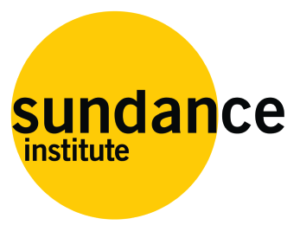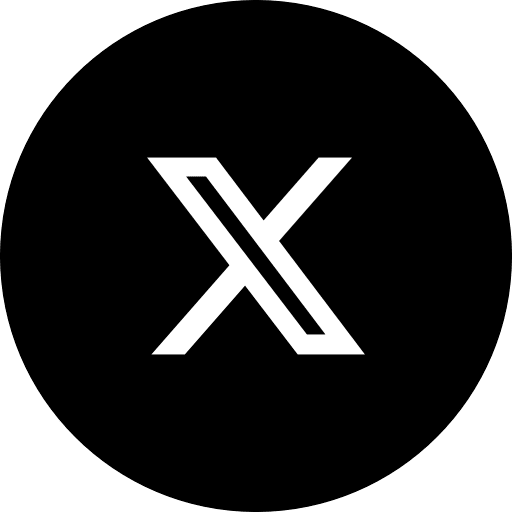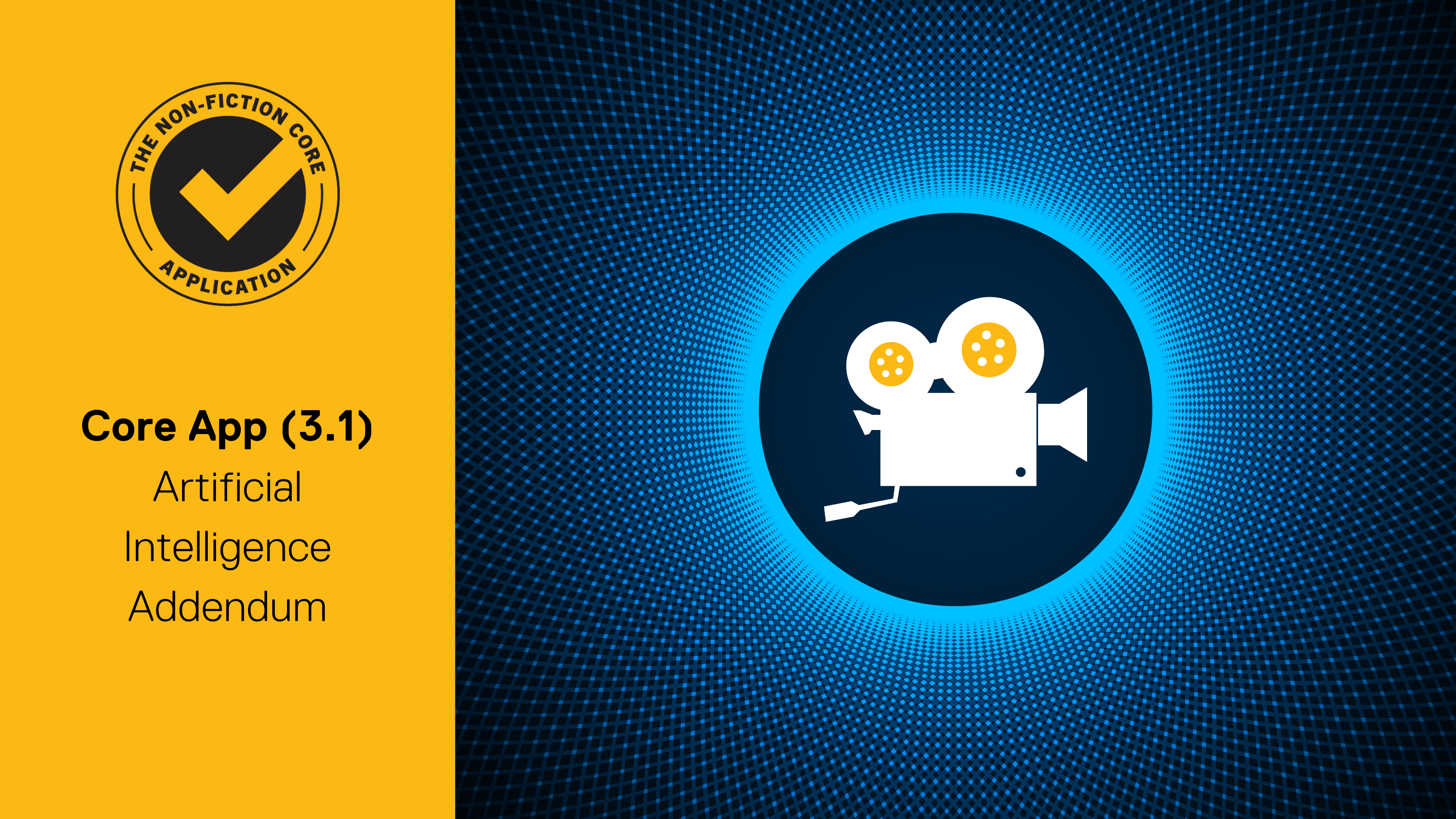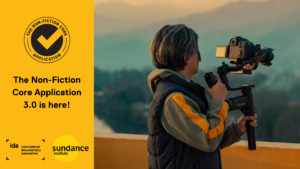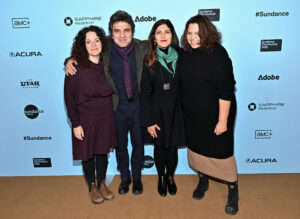By Hajnal Molnar-Szakacs
Dear Documentary Community
This past March, in partnership with the International Documentary Association (IDA), we announced the launch of the Nonfiction Core Application 3.0, an update to the application template created to ease the application burden on filmmakers while reflecting evolving artistic and ethical practices. In our launch post, co-authored with Keisha Knight, we described the Nonfiction Core Application 3.0 not only as a shared resource, but also as a living document that should evolve with the field. Today, we are continuing that evolution.
Over the past few months, members of International Documentary Association (IDA), the Archival Producers Alliance (APA), Google’s Artists + Machine Intelligence (AMI) team, and the Sundance Institute Artist Accelerator Program have been working collaboratively, and we are pleased to share the integration of new questions into the Nonfiction Core Application focused on the use of generative artificial intelligence (GenAI) in nonfiction filmmaking. These updates respond to the urgent need for transparency, ethical clarity, and creative conversations as GenAI tools become more prevalent in the documentary landscape.
The updated Nonfiction Core Application 3.1 has integrated five optional questions about the use of GenAI and links to resources to support further learning and exploration. These integrated questions are informed by a community survey released in March to better understand how GenAI is currently being used by documentary producers and directors, what concerns are emerging, and how artists think about disclosing their GenAI use to funders and audiences. The survey, with 146 respondents, revealed a field that is curious and cautiously experimental. While one-fourth (26%) of respondents do not plan to use generative AI within their films, the primary drivers for AI adoption in film are not just technical, but also creative. Filmmakers are most motivated by AI’s potential to improve workflow efficiency (29%) and expand creative abilities (27%). The survey revealed filmmakers want to disclose information on their use of GenAI, impact to communities and audiences, and their AI workflows. To learn more about the survey results, click here. As a result, we have updated the application with five, optional questions that only appear in sections where artistic approach, ethical responsibility, and production practices intersect.
This collaboration reaffirmed our belief that the Core Application is not only an application template, but also a tool to support field-wide dialogue to help us navigate the changing landscape of documentary filmmaking.
Read on to preview the new questions in Nonfiction Core Application 3.1
Artistic Approach
“If you plan to use generative AI to realize any part of your artistic vision, describe how.”
Invite filmmakers to explain how they are using GenAI with the goal of fostering transparency of when and why GenAI tools are being used. Disclosure invites an open dialogue between artists and funders, and in this emerging field co-creates a shared understanding of how generative AI tools can shape the narrative and the aesthetic of a project.
Accountability and Community Care
“If you are using generative AI, describe what ethical considerations or practices of accountability you are employing. [This can include workflow/tracking/legal review of AI-generated materials; transparency with your participants (if applicable), assessing algorithmic bias; consideration of possible impact on the historical record; copyright issues; and assessment of the AI tools or technologies you are choosing].”
As filmmakers engage with communities and topics that require deep trust and long-term care, we hope respondents will reflect on how they are using GenAI in the project. This reflection can promote responsibility in storytelling and ensures that the participants involved can respond with agency to the tools that are helping shape the narrative. In addition, disclosure of the tools used supports efforts to build accountability, in a rapidly changing tech environment.
Audience Consideration
If you are using generative AI as part of your artistic approach, how do you plan to disclose it to your audience? If you don’t plan to disclose the use of AI, please explain why.
GenAI tools can influence how work is perceived, received and interpreted. Disclosure can build viewer trust and allow for a deeper understanding of the filmmaker’s intent. As documentary practice evolves, disclosing generative AI use can build a shared cultural understanding and engagement.
Comprehensive Line-Item Expense Budget
“Please provide a budget, from development through release, in U.S. dollars, including a budget total. Please ensure that any accessibility, safety, generative AI, and duty of care costs mentioned in your above responses are reflected in the submitted budget.”
Incorporating the costs associated with GenAI use — such as licensing, ethical and legal review, or participant disclosure practices — is essential for building a budget that reflects the true needs of a project.
Current Sample/Rough Cut
“What should reviewers be looking for in your sample? Explain what is present and absent in the sample, and how it will differ as a finished film. Describe how it is representative of the intended story, style, subject, or other aspect of the project. If your sample includes any audio, visual, or text elements generated with AI, please describe how and what tools or technologies you used. We encourage applicants not to spend extra resources creating a sample for each individual fund. If your current sample is outside of the suggested length requirements, please provide reviewers with the time codes of the portion of the sample that best reflects your intended style and approach (e.g., 3:15-12:15).”
As funders and reviewers evaluate proposals, we encourage applicants to contextualize GenAI usage in visual materials. This fosters understanding, not judgment — and helps build a shared vocabulary around creative techniques and disclosure practices.
++
We know that for many of us, GenAI is uncharted territory, which is why alongside the application updates we are providing resources to help support understanding and ethical adoption of GenAI tools. Our partners at the APA have published a Best Practices Guide for use of GenAI in Documentary, as well as a companion Tool Kit, which includes a GenAI Cue Sheet, Crediting Guidelines and Case Studies about how GenAI is being used in the field. Sundance Collab will host “Navigating AI in Filmmaking” — a weekend intensive (June 13–15) — to provide filmmakers with practical insights on how AI is impacting storytelling, production, and distribution. Additionally, IDA’s Documentary Magazine features a regular column, “The Synthesis”, that explores the evolving role of AI in nonfiction media.
Documentary film is built on relationships — relationships between filmmakers and their participants, artists and funders, stories, and audiences. As new technologies emerge, the trust that is essential for strong relationships can be threatened. It is our joint responsibility through transparency, education and collective action to ensure that trust remains intact.
The inclusion of GenAI-related questions in the Nonfiction Core Application is about fostering dialogue, transparency, and shared ethics in a time of rapid change. It’s about ensuring that innovation does not come at the cost of accountability and that documentary remains a trusted cultural resource. And it’s about empowering artists to lead these conversations hand in hand with funders.
We invite you to engage with these questions — whether you are a filmmaker, a funder, or a member of the documentary community. The Core Application (v 3.1) is a tool that should and will evolve over time. Together, let’s use it to shape a field that is as imaginative as it is responsible.
